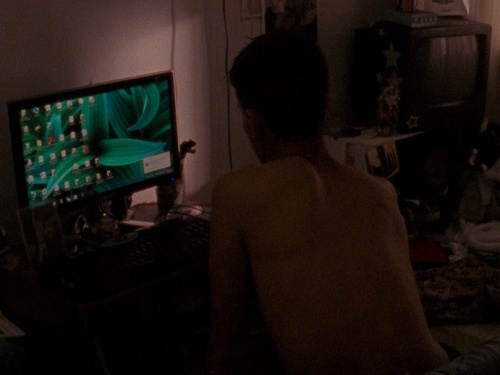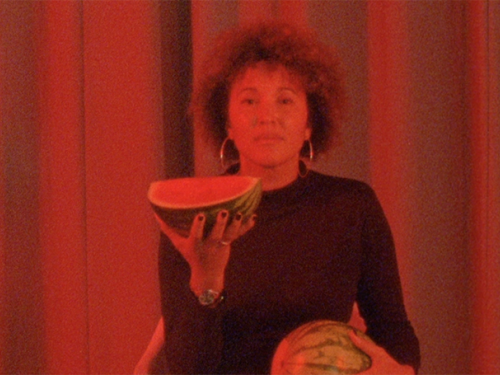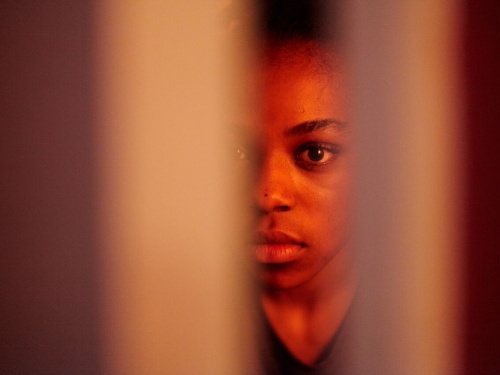Jemma Desai on I am Dora
We asked Jemma Desai from I am Dora, which returns to the ICA this Saturday, how it all got started. Here's what she told us.
I started I am Dora as a somewhat a personal project.
It was much like an online journal, where I was able to express how I felt through the images and quotes. The publication and event series came out of my own experience of film curation. I work in the programming department of film festivals and often find myself in conversations about film where I feel at odds with the discussions that place what I feel is an arbitrary value judgment on the worth of a film. Sometimes my response to a film is anything but objective, and this is when I feel I most engage with film as a piece of art.
I wanted to create a space where I could show the films I wanted to, on their original formats and tell people why I thought they were important. Working within film exhibition, in addition to the disconnect with the emotional impact and critical value of a film, I feel there is a real separation between film marketing and the visual artistry of much of the film I love. So I approached my friend and designer Claire Huss and we discussed how we could create something that looked as beautiful as the films and female characters in them. The physicality of the printed items was important to us. As we move further and further into digital formats for film and print, there seems something decadent, but also incredibly relevant about showing films from their original prints, or having a printed object to take away at a screening.
The first publication was a real labour of love and couldn’t have happened had Claire and I not been very close friends. It focused on Sigmund Freud’s Dora, one of his first case studies on female hysteria. Claire and I never discussed a brief, but had long conversations about things that I wanted to communicate about myself through the story of Dora. Much like the final product, these conversations were fragmentary and often my voice was reticent. The resulting publication was a beautiful materialisation of this process. I wrote an enigmatic story using various quotes and images that I found and Claire intuitively designed them onto various formats, securing all of them with a single brass screw. Some of the formats were particularly small and hard to manipulate and understand, reflecting both Dora’s story and the story about myself which I was attempting to tell through hers.
The second piece we worked on together was a much smaller commission. We had asked Romola Garai to guest curate a screening and write a piece on her choice of film and the female characters in it. I also wrote a piece independently. Claire took these two pieces and created a dialogue based primarily on how it looked typographically. She also designed two very simple inserts that honoured the female characters that Romola and I had written about. These were all arranged along with a boiled sweet, in a candy stripe paper bag and handed out as limited edition film notes at the screening.
For our third publication and event, we’re returning to the ICA and are launching a new limited run publication, focusing this time on Sylvia Plath. Unlike Dora, most people seem to have a basic knowledge of Plath’s story. The Bell Jar, a tumultuous marriage to Ted Hughes and suicide seem to have become her defining characteristics and they often obscure just how disciplined a writer she was and the incredible emotional impact of reading Plath’s work for the first time.
We approached the publication in much the same way as the first, but have executed it in a very different way. This time, we discussed the story I wanted to tell in a very detailed and methodical way, reflecting Plath’s own measured approach to her craft. As we worked, most of this detail fell away. As one of the most written about female poets, it seemed the less we said the more powerful our statement might be. As we worked this quote from Sylvia Plath kept running through my head: "I think my poems immediately come out of the sensuous and emotional experiences I have, but I must say I cannot sympathise with these cries from the heart that are informed by nothing except a needle or a knife, or whatever it is. I believe that one should be able to control and manipulate experiences, even the most terrifying, like madness, being tortured, this sort of experience, and one should be able to manipulate these experiences with an informed and intelligent mind."
I am Dora has never been biographically about the women we present on the blog or through our publications. Rather the project is about what these women allow you to say about yourself, and I hope that it allows me to say this in a measured way, and one that does not reduce these women’s stories, or my own to one story, one defining characteristic.
The third I am Dora is at the ICA on January 12 2013, at 6.30pm focusing on Sylvia Plath.
You can find Jemma and I am Dora at www.iamdora.co.uk as well as on Facebook and Twitter.
Claire Huss can be found at www.clairehuss.com.





